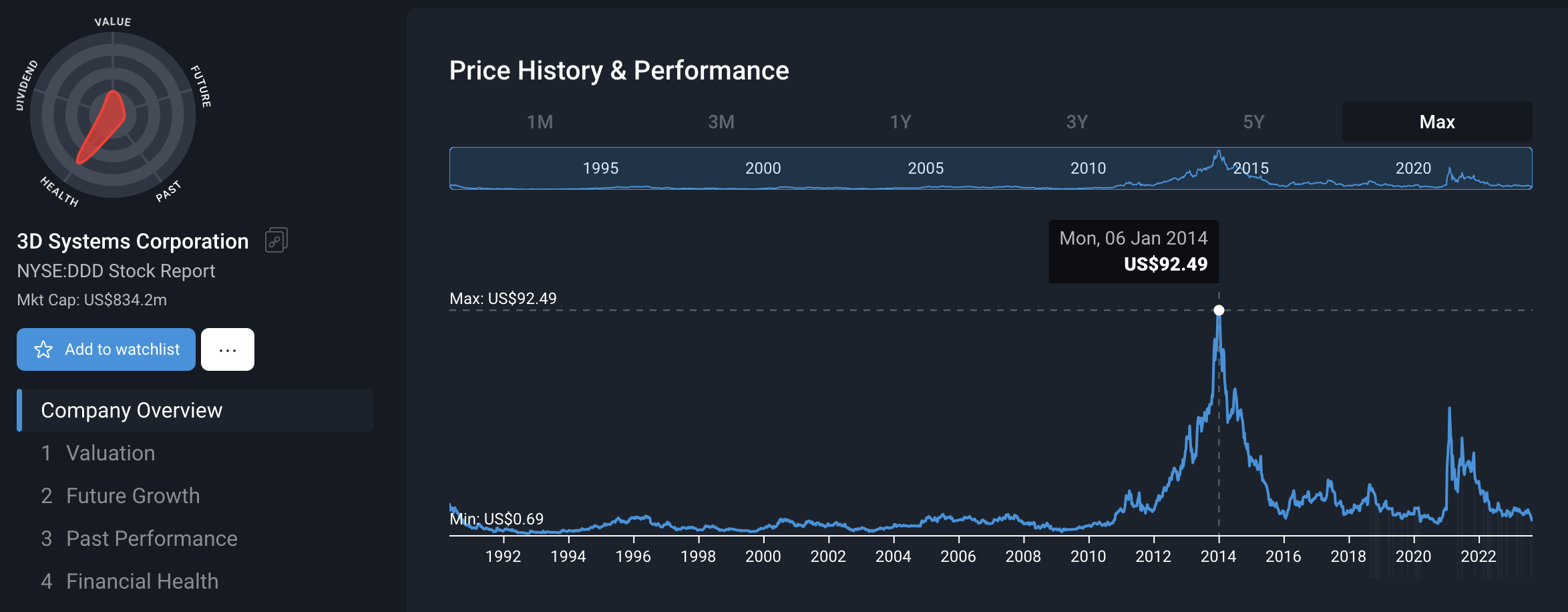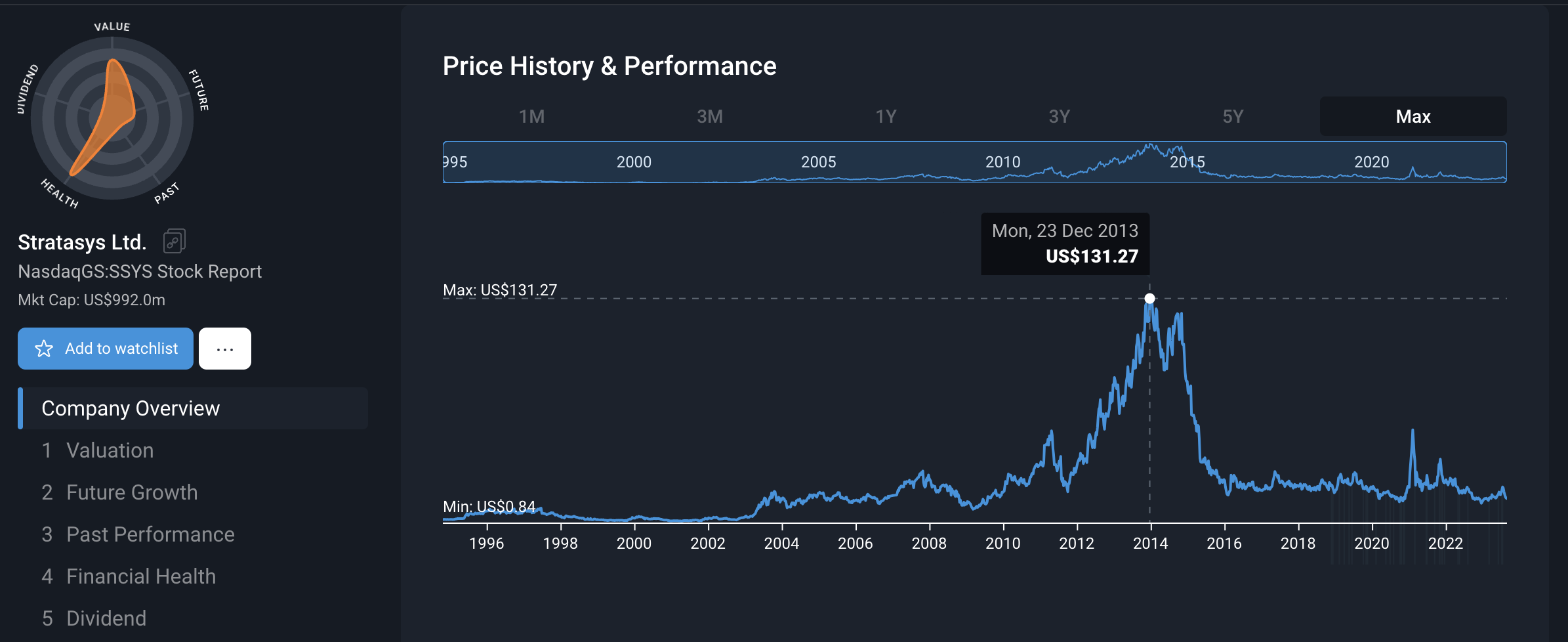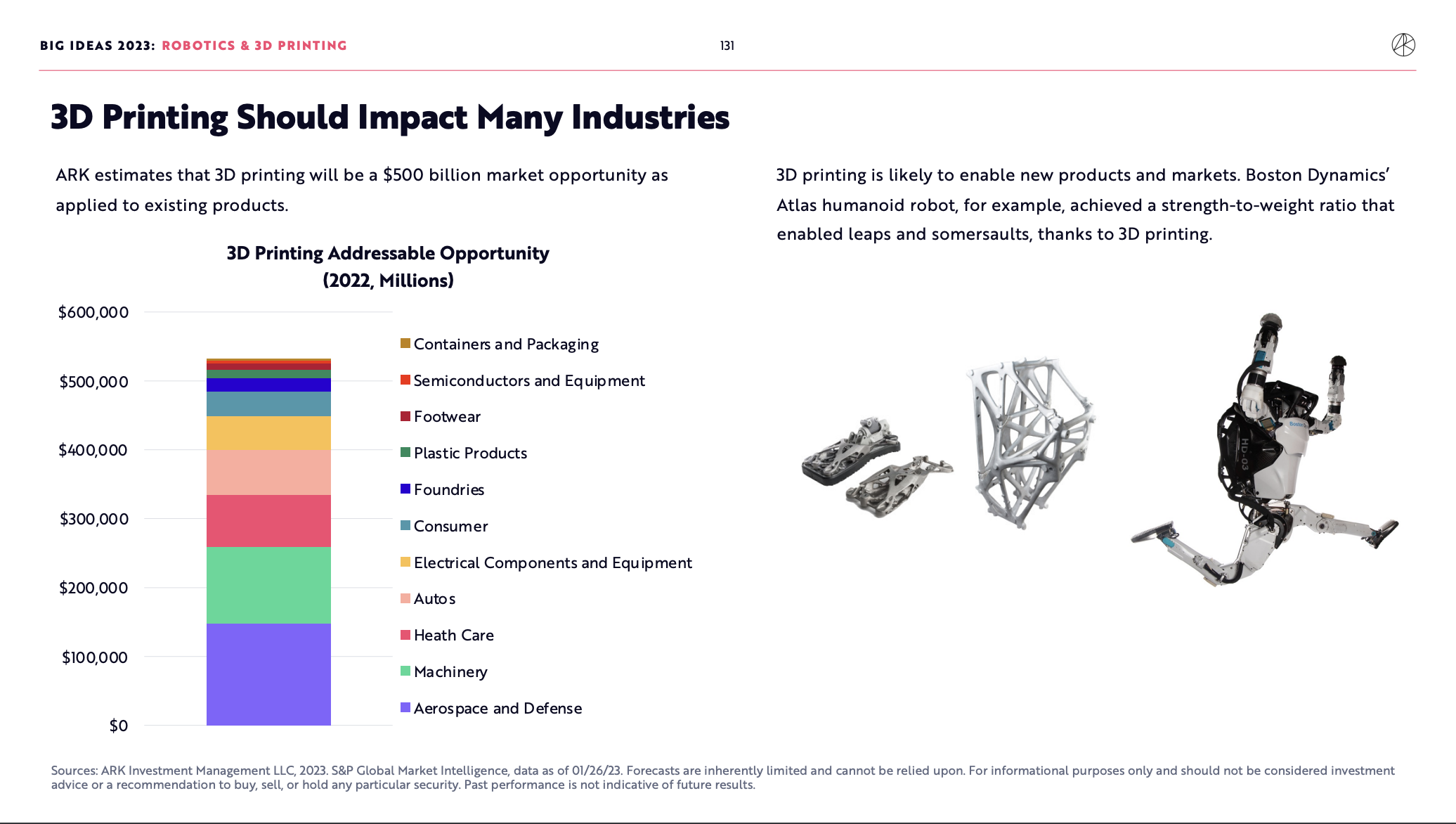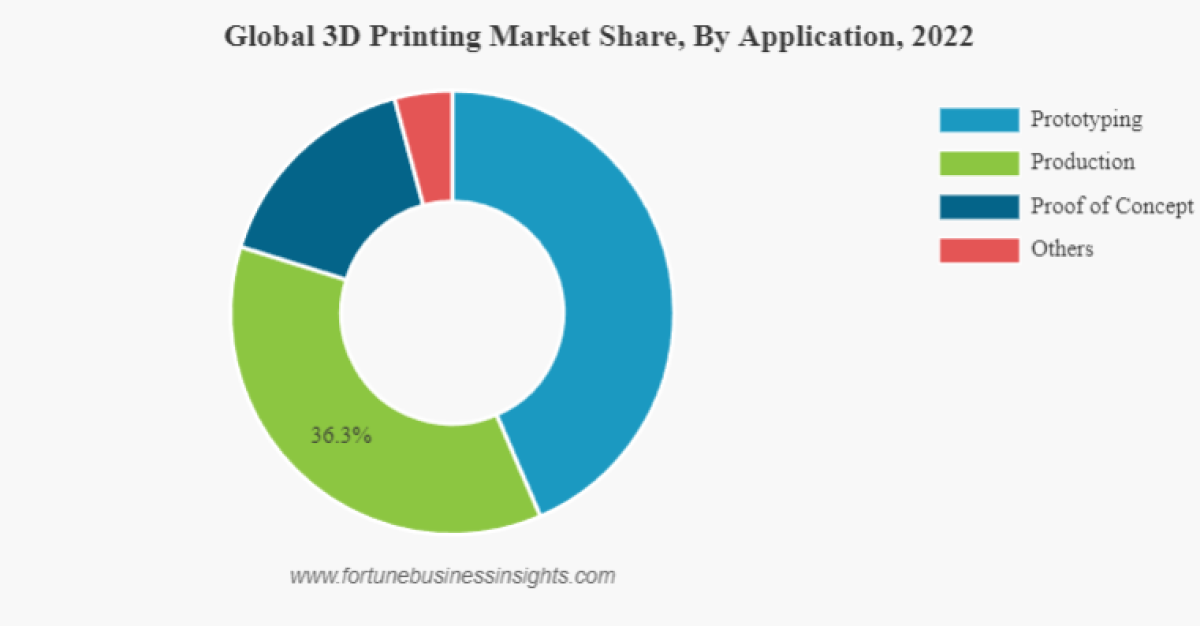"We are navigating by the stars under cloudy skies" - Jerome Powell, Jackson Hole, August 2023
Welcome to part 8 of our ‘ Big Trends ’ series! This week we’re having a look at 3D printing, also known as additive manufacturing .
While the industry is still in its infancy, there’s already plenty of use cases for the technology, with more being developed as we speak.
Most of the companies in the space are still tiny, but if you’re an investor with a tolerance for risk and a long time horizon, you might find the space worth considering for a portion of your portfolio!
So in this piece we’re going to get you up to speed on the 3D printing industry, some of the use cases of the technology already and then we’ll cover the key companies in the space!
🎧 Would you prefer to listen to these insights? Checkout the audio recording on Spotify and Apple Podcasts !
Manufacturing in the Digital Age
3D printing is the process of manufacturing a physical object from a 3D model, typically by adding layers of a material. Unlike traditional manufacturing it doesn’t require molds, an assembly line, or machines designed to make each individual object. Because of that you can probably see the huge appeal in certain use cases where lower volume, highly complex parts are needed. It's also better suited to on-demand manufacturing, customization and prototyping, and to top it all off, less material is used.
It does have limitations though, mostly due to the fact that currently it only works with certain materials, like metals and plastics.
Round One: Boom and Bust
Before we dive into the state of 3D printing today, there’s a good lesson to be learnt from the 3D printing bubble of 2013.
While the leading companies in the industry had been around since the 1980s, the introduction of 3D printers for the retail market caught the market’s attention. As you can imagine, the story was quite compelling (albeit a little unrealistic) - anyone would be able to print anything they wanted.
These two charts show how things turned out for the share prices of industry leaders 3D Systems and Stratasys .


3D Systems and Stratasys Share Prices 1992 to 2023 - Simply Wall St
The 3D printing bubble came a few years before a number of similar bubbles (cannabis,EV stocks and crypto just to name a few), but the fact that 10 years have now elapsed is a useful way to view how the relationship between expectations, valuations and reality played out.
If we use 3D Systems as an example, the stock price peaked in December 2013 at around $90, having earned $0.45 a share in 2013 (a PE ratio of 200). To justify that price, the company's EPS would need to have grown at around 40% annually for the next 10 years. If that happened, the company would now be earning over $13 a share.
So what actually happened? Well, consensus estimates are for a loss of $0.65 a share for FY2023, which will bring the cumulative loss per share for the 2014 to 2023 period to $8. Hence the stock is now trading at $6.60. This is a stark reminder of what happens when overhyped valuations meet reality.
Now let’s look at where the industry is currently, and whether it may be closer to an inflection point.
3D Printing 2.0: Building Scale
While many of the pureplay 3D printing companies have failed to live up to expectations since that bubble a decade ago, it’s worth noting that global revenue for the industry has grown at a very steady 20% a year over the last decade.
The poor performance of many of the companies in the industry has been due to lack of scale. Developing the technology is expensive, and so is owning the equipment.

Precedence Research Global 3D Industry Revenue Forecasts - Image Credit: Globalnewswire.com
Current global revenue for the industry is around $20 billion which is tiny compared to other disruptive technologies. Most forecasts for the industry see revenue continuing to increase at around 20-22% a year through 2032 bringing global revenue to around $100 billion.
Other analysts are even more bullish: ARK Invest reckons it could be a $500 billion dollar opportunity . Recent investments in the industry by large companies suggest confidence in the space and include:
- Microsoft: Investing in Nanofabrica and supporting 3D printing within Windows
- HP: Moving from printing on paper to providing 3D printing solutions acorss multiple industries .
- And just last week it was reported that Apple’s next watch series will include a 3D printed chassis .
3D Printing Applications
Additive manufacturing has applications across many industries.
Besides prototyping, here are a few examples of the way it is being used:
- 🏥 Healthcare: The healthcare industry has been an early adopter of the technology and it is being used in several different ways. 3D printed implants and prosthetics are now commonplace, as are printed dental products. Printed replica organs are also used to plan surgical procedures. In addition, the technology is used to prototype new medical devices.
- 🏭 Manufacturing: Perhaps the largest application currently for 3D printing is the industrial manufacturing industry, including the auto industry. Its use for large scale production is still limited, but 3D printing is widely used for prototyping and testing, and setting up new automation processes.
- ✈️ Aerospace: The aerospace and defense industry is often an early adopter of new materials, some of which are suited to additive manufacturing. The likes of
Boeing are already using the 3D printing technology to
halve the lead time of certain assets , and have
tested 3D parts in helicopters . They even did a test flight with a
777’s that had over 200 3D printed parts in it
.
- The industry also benefits from substantial government investment. In time, 3D printing is likely to be invaluable to whatever humans do in space - whether that’s repairing satellites or colonizing Mars.
- The industry also benefits from substantial government investment. In time, 3D printing is likely to be invaluable to whatever humans do in space - whether that’s repairing satellites or colonizing Mars.
- 🏗️ Construction: There are plenty of
examples of 3D printed houses , but most of these are still somewhat experimental. However, the technology is already widely used to create molds for construction, and by architects to build scale models and concept pieces.
- 🔌 Electronics: High volume manufacturing of electronic components may still be confined to traditional production lines, but 3D printing is increasingly being used for custom products and for prototyping.

Big Ideas 2023: Ark Invest
Key 3D Printing Companies
As mentioned, 3D printing companies are still small, and most of the pure play companies are still valued at less than $1 billion.
These include 3D Systems and Stratasys both of which develop and produce 3D printers, materials for additive manufacturing and software to design and produce objects. These companies create systems for the auto, medical, and aerospace industries.
Stratasys recently announced a merger with Desktop Metal which focuses on metal printing systems.
Niche companies include Proto Labs which concentrates on systems for product prototyping and Nano Dimension , an Israeli company that makes machines that print electronic components. Faro Technologies provides a range of products and solutions for factory automation.
The more profitable companies in the industry are those that provide the software used in 3D product design because they don’t have the high capital costs that go with manufacturing. Ansys provides a wide range of software and services to the manufacturing industry, including 3D design solutions. Larger companies like Autodesk and Dassault Systemes also investing in solutions for 3D printing.
Xometry is another ancillary company which operates a marketplace for 3D printing services and custom parts.
The Insight: The Future of Additive Manufacturing
The tailwinds supporting 3D printing are less established so it's still worth being a little cautious. The industry's growth is also likely to depend on what happens in other industries including automation, healthtech, and even the metaverse. The faster the world becomes automated and the global economy grows, the greater the tailwinds will be.
The chart below may reflect the key metric to watch.
Currently the largest applications are prototyping and proof of concept, with actual production accounting for 36% of revenue. If that percentage increases substantially, a real secular trend could be under way.

Global 3D Printing by Application - Image Credit: Fortunebusinessinsights.com
What Else is Happening?
First a recap of the key data releases last week…
-
🇦🇺 Australia’s consumer inflation rate was slightly lower than expected
- This bodes well for next week’s rate decision. CPI fell to 4.9% In July from 5.4% in June.
-
🇺🇸 US Jolts job openings showed the labor market continuing to soften gradually.
- Job openings fell to 8.8 million in July, down from 9.2 million in June, and well below the expected 9.5 million consensus estimate.
- The number of job openings is still relatively high but heading in the right direction.
-
🇺🇸 US GDP growth estimates for the second quarter were revised lower, from 2.4% to 2.1%.
- The revised figure was lower than expected, but still slightly higher than the first quarter.
- The GDPNow estimate for US 3rd quarter GDP growth is currently 5.9% .
- That’s very high for an economy that was expected to be slipping into a recession six months ago. But this is a very early estimate, and likely to change as more data comes in, so we wouldn’t read too much into it.
And then, a few news items that we thought were worth noting…
-
💼 Grayscale won its lawsuit against the SEC over the regulator's refusal to allow the company to convert its Bitcoin Trust into an ETF.
- This ruling could pave the way for other Bitcoin ETFs which the SEC has so far refused, though ETFs based on Bitcoin futures contracts have been allowed.
- This is good news for Bitcoin bulls as ETFs would make investing in the cryptocurrency possible with a stock trading account.
- It will be interesting to see how this affects trading on platforms like Coinbase that rely on investors buying the underlying asset.
-
⌨️Cybersecurity companies Crowstrike and Okta both reported quarterly results that beat consensus estimates on the top and bottom line.
- Crowdstrike’s revenue increased by 37% over the last year - better than expected but still reflecting a significant slowdown in sales growth. However, EPS were up 106% (non-GAAP) reflecting improved profitability. Guidance for the current quarter was also well ahead of consensus estimates.
- Okta also reported EPS that were well ahead of estimates, along with strong sales metrics.
Key Events During the Next Week
This week trade data will be released in Germany on Tuesday, Australia and China on Tuesday and the US on Wednesday. These will provide us updates on cross-border economic activity in these nations.
Australia’s interest rate decision is due on Tuesday (likely to be kept on hold given softening inflation data ), followed by second quarter GDP data on Wednesday.
Employment data is due in the US on Thursday and Canada on Friday.
During the tail end of earnings season it’s mostly software and retail companies reporting. Some of the prominent names reporting this week include:
Have feedback on this article? Concerned about the content? Get in touch with us directly. Alternatively, email editorial-team@simplywallst.com
Simply Wall St analyst Richard Bowman and Simply Wall St have no position in any of the companies mentioned. This article is general in nature. We provide commentary based on historical data and analyst forecasts only using an unbiased methodology and our articles are not intended to be financial advice. It does not constitute a recommendation to buy or sell any stock and does not take account of your objectives, or your financial situation. We aim to bring you long-term focused analysis driven by fundamental data. Note that our analysis may not factor in the latest price-sensitive company announcements or qualitative material.

Richard Bowman
Richard is an analyst, writer and investor based in Cape Town, South Africa. He has written for several online investment publications and continues to do so. Richard is fascinated by economics, financial markets and behavioral finance. He is also passionate about tools and content that make investing accessible to everyone.

